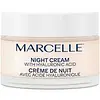What's inside
What's inside
 Key Ingredients
Key Ingredients

 Benefits
Benefits

 Concerns
Concerns

No concerns
 Ingredients Side-by-side
Ingredients Side-by-side

Water
Skin ConditioningIsononyl Isononanoate
EmollientGlycerin
HumectantPropanediol
SolventCetearyl Olivate
C10-18 Triglycerides
EmollientNiacinamide
SmoothingSodium Hyaluronate
Humectant1,2-Hexanediol
Skin ConditioningSodium Polyacrylate
AbsorbentSorbitan Olivate
EmulsifyingGlyceryl Stearate
EmollientArgania Spinosa Kernel Oil
EmollientDimethicone
EmollientSodium Gluconate
Skin ConditioningTocopheryl Acetate
AntioxidantCaprylhydroxamic Acid
Octyldodecanol
EmollientCI 77491
Cosmetic ColorantWater, Isononyl Isononanoate, Glycerin, Propanediol, Cetearyl Olivate, C10-18 Triglycerides, Niacinamide, Sodium Hyaluronate, 1,2-Hexanediol, Sodium Polyacrylate, Sorbitan Olivate, Glyceryl Stearate, Argania Spinosa Kernel Oil, Dimethicone, Sodium Gluconate, Tocopheryl Acetate, Caprylhydroxamic Acid, Octyldodecanol, CI 77491
Water
Skin ConditioningGlycerin
HumectantCaprylic/Capric Triglyceride
MaskingCetyl Alcohol
EmollientCetearyl Alcohol
EmollientDimethicone
EmollientCeteareth-20
CleansingStearyl Alcohol
EmollientCeramide NP
Skin ConditioningCeramide AP
Skin ConditioningCeramide EOP
Skin ConditioningBeta-Sitosterol
Emulsion StabilisingSucrose Stearate
EmollientSucrose Distearate
EmollientSodium Hyaluronate
HumectantCholesterol
EmollientPolysorbate 20
EmulsifyingPolyglyceryl-3 Diisostearate
EmulsifyingDipotassium Phosphate
BufferingSodium Lauroyl Lactylate
EmulsifyingPhenoxyethanol
PreservativePhytosphingosine
Skin ConditioningMethylparaben
PreservativePropylparaben
PreservativeDisodium EDTA
Carbomer
Emulsion StabilisingXanthan Gum
EmulsifyingWater, Glycerin, Caprylic/Capric Triglyceride, Cetyl Alcohol, Cetearyl Alcohol, Dimethicone, Ceteareth-20, Stearyl Alcohol, Ceramide NP, Ceramide AP, Ceramide EOP, Beta-Sitosterol, Sucrose Stearate, Sucrose Distearate, Sodium Hyaluronate, Cholesterol, Polysorbate 20, Polyglyceryl-3 Diisostearate, Dipotassium Phosphate, Sodium Lauroyl Lactylate, Phenoxyethanol, Phytosphingosine, Methylparaben, Propylparaben, Disodium EDTA, Carbomer, Xanthan Gum
Ingredients Explained
These ingredients are found in both products.
Ingredients higher up in an ingredient list are typically present in a larger amount.
Dimethicone is a type of synthetic silicone created from natural materials such as quartz.
What it does:
Dimethicone comes in different viscosities:
Depending on the viscosity, dimethicone has different properties.
Ingredients lists don't always show which type is used, so we recommend reaching out to the brand if you have questions about the viscosity.
This ingredient is unlikely to cause irritation because it does not get absorbed into skin. However, people with silicone allergies should be careful about using this ingredient.
Note: Dimethicone may contribute to pilling. This is because it is not oil or water soluble, so pilling may occur when layered with products. When mixed with heavy oils in a formula, the outcome is also quite greasy.
Learn more about DimethiconeGlycerin is already naturally found in your skin. It helps moisturize and protect your skin.
A study from 2016 found glycerin to be more effective as a humectant than AHAs and hyaluronic acid.
As a humectant, it helps the skin stay hydrated by pulling moisture to your skin. The low molecular weight of glycerin allows it to pull moisture into the deeper layers of your skin.
Hydrated skin improves your skin barrier; Your skin barrier helps protect against irritants and bacteria.
Glycerin has also been found to have antimicrobial and antiviral properties. Due to these properties, glycerin is often used in wound and burn treatments.
In cosmetics, glycerin is usually derived from plants such as soybean or palm. However, it can also be sourced from animals, such as tallow or animal fat.
This ingredient is organic, colorless, odorless, and non-toxic.
Glycerin is the name for this ingredient in American English. British English uses Glycerol/Glycerine.
Learn more about GlycerinSodium Hyaluronate is hyaluronic acid's salt form. It is commonly derived from the sodium salt of hyaluronic acid.
Like hyaluronic acid, it is great at holding water and acts as a humectant. This makes it a great skin hydrating ingredient.
Sodium Hyaluronate is naturally occurring in our bodies and is mostly found in eye fluid and joints.
These are some other common types of Hyaluronic Acid:
Learn more about Sodium HyaluronateWater. It's the most common cosmetic ingredient of all. You'll usually see it at the top of ingredient lists, meaning that it makes up the largest part of the product.
So why is it so popular? Water most often acts as a solvent - this means that it helps dissolve other ingredients into the formulation.
You'll also recognize water as that liquid we all need to stay alive. If you see this, drink a glass of water. Stay hydrated!
Learn more about Water